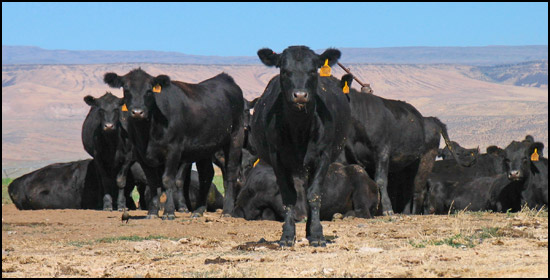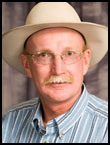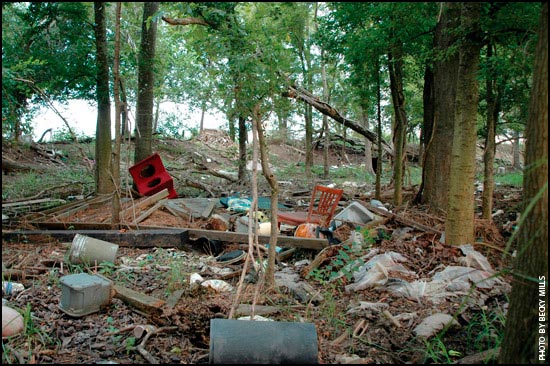MANAGEMENT...
SPECIAL SECTION — Weaning Strategies

Weaning with a Plan
Children starting school are a lot like calves getting weaned. Each individual is different. For some, the experience is more stressful than for others, but careful preparation by their caretakers can help make the whole experience much more productive.
"Producers need to plan way ahead of the time period when they will start weaning, while also paying attention to their calves throughout the production system," says Max Irsik, Extension veterinarian at the University of Florida. Watching indicators like cow condition, range quality and general calf health can help producers decide on the best time to wean. Read more.
Early Weaning Provides Boost for Young, Thin Cows
The common tradition for weaning spring-born calves is to wait until late October and even early November. Most mature cows that have been feeding on adequate summer forages will be in very good body condition, despite the pressure of nursing a rapidly growing calf. However, very often, 2-year-old cows and even some 3-year-old cows will be in marginal body condition at the end of summer. If the rancher chooses to wait until late October to wean the calves from these marginal young cows, there is very little time between weaning and the first killing frost to recover considerable body condition. Without the nutrient drain of producing and delivering milk, she can use this pre-frost period to great advantage and replenish her own body stores. Read more.
Herd and Calf Weaning, Marketing and Management
In addition to holding local meetings and statewide conferences, the Iowa Beef Center has added a new format for information — the online meeting.
The first online meeting, "Fall Cow Herd Decisions: Herd and Calf Weaning, Marketing and Management," offers sessions that cover nutrition, health, marketing, cow culling and weaning strategies. The free resource features the latest information on weaning management topics ranging from vaccinations to stress management. Related topics, such as cow culling, are covered to help producers make management decisions that coincide with weaning decisions.
The course material is offered by livestock experts in a variety of ways — podcasts, voice-over PowerPoint presentations, fact sheets, newsletters and spreadsheets. Read more.
Minimizing Weaning Stress on Calves
Management practices that minimize weaning stress by making the transition less abrupt can improve calf health and weight gain. Facilities, labor, and feed resources should be considered when deciding which weaning protocol is most likely to minimize stress on calves while still preparing them for the next stage of production. Read more.

Ron Torell
Back to Basics
Why 45-day weaning?
Interstate, diesel smoke or yellow-line weaning; these are all terms used to describe the way many cow-calf producers prefer to wean and market calves. It is easy and requires minimal effort and ranch facilities. We strip the bawling calves off the cows, sort for sex, weigh on the ground with a 2% pencil shrink, and then load the bawling calves on the truck, sending them to the next segment of the industry to deal with.
More often than not, when these calves reach their destination a wreck occurs within 45 days. At this point, it's someone else's wreck. Back at the ranch, cows are settled and all is fine within a week.
In this issue of "Back to Basics," let's examine why buyers prefer calves weaned 45 days to calves weaned 15, 20 or even 30 days. Read more.
It's Not Too Early to Gear Up For Winter
"Over the years you have probably listened to many talks and presentations, read numerous articles, and discussed in some detail with your friends, neighbors, and fellow forage/livestock producers how you would really like to get ahead of the eight-ball when it comes to feeding your livestock during the winter," says David Davis, superintendent of the University of Missouri (MU) Forage Systems Research Center.
Now is the time to plan a winter feeding strategy to make life a lot easier — and more profitable — this winter, Davis says. Read more.

Disasters Happen
When Michael Bishop came to 7L Farms in April 2005, there was no disaster preparedness plan. Instead, he relied on owner Jimmy Levens for a quick how-to on getting the operation as ready as possible before Hurricane Katrina hit in late August. Unfortunately, he got an all-too-vivid illustration of why a detailed plan is needed. Read more.

Kris Ringwall
Beef Talk
Not all land is created equal.
Land mapping of "ecosites" in pastures is helping producers determine stocking rates. This mapping process identifies potential forage production for all the individual ecosites to determine the number of acres needed to provide the nutritional requirement for a cow for a month.
Did you know this process commonly is called acres per animal unit month (AUM) per pasture?
The process seems complicated, but times are changing. The concept of individual ecosites within a pasture and relative productivity is very real, so it is time to listen up and get with the program. Read more.
Mesquite — How to Control It
Many people view honey mesquite (Prosopis glandulosa) as a poor-quality rangeland plant. Mesquite has some value, but when unmanaged, it can dominate a rangeland, reducing the available forage for livestock.
There are many ways to control mesquite. The most effective way to control mesquite is to mechanically or chemically kill the buds at the base of the stem to prevent re-sprouting. Additional management options include the use of prescribed fire. Read more.
Livestock Disaster Sign-up Begins
Agriculture Secretary Tom Vilsack announced Sept. 14 that producers may begin applying for benefits under the provisions of the Emergency Assistance for Livestock, Honeybees, and Farm-Raised Fish Program (ELAP) and the Livestock Forage Disaster Program (LFP). These permanent disaster programs, authorized in the 2008 Farm Bill, replace previous ad-hoc disaster assistance programs and are funded through the Agricultural Disaster Relief Trust Fund. Read more.




